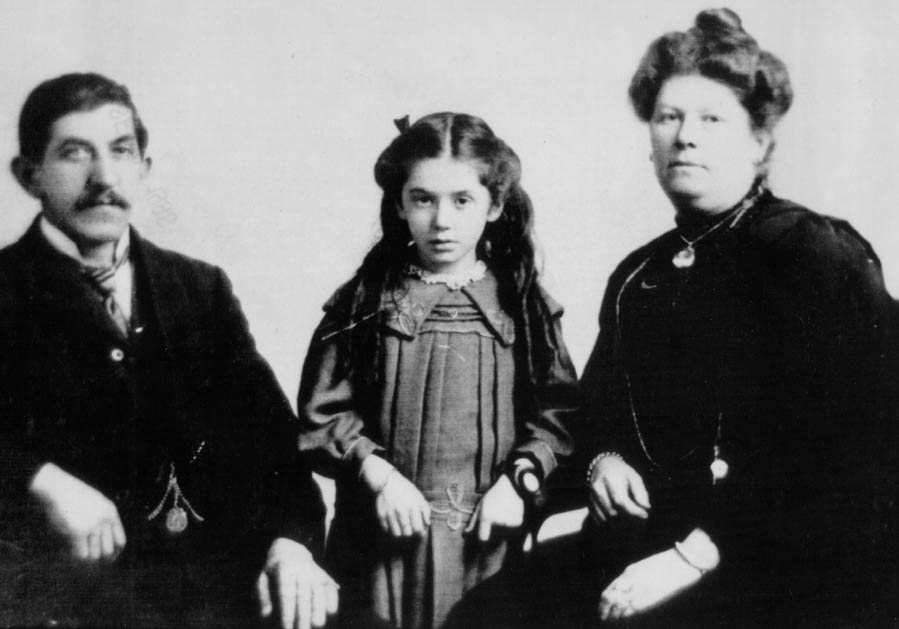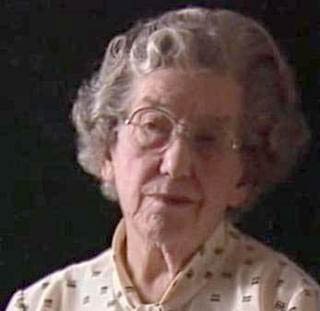One of the last people alive when the RMS Titanic sank on April 15, 1912, was a British woman named Eva Miriam Hart MBE (31 January 1905 – 14 February 1996). She was only seven years old when the Titanic sank.
Eva Hart was born on January 31, 1905, to a Christian mother and a Jewish father in Ilford, Essex, England (now a part of Greater London). Benjamin Hart and his wife Esther (née Bloomfield) were her parents. Their lone child was named Eva. Having been married once before, Esther had nine children from her prior union. St. Mary’s Convent, which became St. Mary’s Hare Park, was Eva’s school in Gidea Park, London. Benjamin made the decision for his family to move to Winnipeg, Manitoba, Canada, in the beginning of 1912. His choice to leave England was motivated by his brother, who was already residing abroad, as well as the economic downturn that England was experiencing at the time.
On April 10, 1912, Eva and her parents boarded the Titanic as second-class passengers when Eva was seven years old. They were scheduled to sail on the SS Philadelphia, but that spring’s Southampton coal strike prevented her from going, and many of her occupants were moved to the Titanic. According to rumours, Eva’s mother was afraid of the Titanic and thought it would sink; she believed it was arrogance to declare a ship unsinkable and that it would go against the will of God. Eva’s mother was so afraid that she only slept during the day and spent the nights fully clothed in their hut.
On April 14, at 11:40 p.m., the Titanic struck an iceberg while Eva was asleep. When her mother felt “a slight bump” at that moment, she was awake. Reluctantly, her husband left the lodge when she asked him to look into the noise. When he got back, he told her and Eva about the collision and picked Eva up in a blanket and took her out on the boat deck. Eva’s father instructed her to “be a good girl and hold Mummy’s hand” as he put his wife and daughter in Lifeboat No. 14. He died in the sinking, and if his body was ever found, it was never recognized. It was also the last thing he ever said to her.

The next morning, the RMS Carpathia came to the aid of Eva and her mother. Eva and her mother left for the UK shortly after landing in New York City on April 18, as her mother had never intended to travel to New York. When Eva’s mother passed away in 1928, when Hart was only 23 years old, she booked a ticket on a passenger ship bound for Singapore, facing her worries head-on and locking herself in her cabin for four days straight until the nightmares stopped. Eva suffered from terrible dreams.
An audio walking guide of Southampton’s Titanic memorials was created in April 2012, and it included audio excerpts of Hart discussing her experience. The tour guide leads the audience on a walking tour of Southampton, the location of Titanic’s maiden voyage. She was seven years old when the sinking occurred, and she still had a number of clear memories.
That day, we took the boat train. At the age of 7, I had never laid eyes on a ship. It appeared to be rather large. Everyone was giddy with excitement. My mother told my father that she had decided quite firmly that she would not sleep on that ship when we descended to the cabin. At night, she would sit up. She made the decision to forgo going to bed at night, and she did not! One interesting truth about the magnificent Titanic is that, despite claims to the contrary, it sank and about 700–1,500 people survived. This information was publicised worldwide. Hart stated, “I saw that ship sink,” in a 1993 interview::::Eva Hart
Over her career, Hart held a number of jobs. She worked as a magistrate, an organiser for the Conservative Party, and a professional vocalist in Australia. During the Second World War, Hart volunteered to provide entertainment for the soldiers and to help people in need following the Blitz. From 1962 until her passing, she belonged to Soroptimist International of East London, where she spent 34 years as a member and held the position of club president in 1970–71.
Hart received an appointment as a Member of the Order of the British Empire (MBE) in the 1974 New Year Honours List, “for political and public services in London.” During the Three-Day Week, the Duke of Kent gave it to her.
“If a ship is torpedoed, that’s war,” Hart would often reprimand the White Star Line for not providing enough lifeboats for every passenger on the Titanic. It’s natural for it to strike a rock during a storm. However, it’s absurd that people should perish just because there weren’t enough lifeboats. However, the official British Inquiry report indicates that having more boats would not have necessarily made a difference, as the crew did not launch all of its boats correctly in the time allotted, and there was no boat drill or prior instruction provided to the crew on what to do in the event of an emergency.
In interviews, Hart asserted that the ship had broken in half, a much-discussed rumour that was subsequently confirmed to be accurate upon Robert Ballard’s 1985 discovery of the wreck site. She was especially adamant about the issue surrounding the SS Californian, a ship that was in close proximity to the Titanic but did not react to rescue requests or distress flares. According to Hart, the distance between the ship and the Titanic was less than 10 miles (16 km), not 19 miles (31 km), as was previously thought.
[The Californian] was there. It was quite near. A ship nineteen kilometres away was not visible to me. I observed a ship that was really close; they claimed to be less than nine miles away when I saw it, but they are now attempting to claim to be nineteen… You know, I saw it, and it was clearly a ship—not just “lights on the horizon.” And that spacecraft must have seen us fire our rockets, since I witnessed it. According to their inquiry, they saw it, but they didn’t consider it to be a warning sign. Rockets in the middle of the Atlantic in the middle of the night must be problematic, I would have assumed::Eva Hart.
Hart was quick to point out that the Titanic was a graveyard and should be handled as such when salvage operations at the wreck site started in 1987. She called the salvagers “fortune hunters, vultures, pirates, and grave robbers” and frequently lamented their “insensitivity and greed.” She said in Titanic: The Complete Story:
I fervently hope they never try to raise any portion of it. I sincerely hope that they will keep in mind that this is a grave—a burial containing 1,500 individuals who ought not to have passed away—and that grave robbing is something I strongly abhor.
Hart continued to participate in Titanic-related events far into her eighties. She went back to the United States in 1982 to attend a Titanic Historical Society convention honouring the ship’s 70th anniversary together with a few other survivors. 1987, 1988, and 1992 were her other three conventions that she attended. Shadow of the Titanic: A Survivor’s Story, her autobiography published in 1994, detailed her experiences on board as well as the long-term effects of the ship’s sinking. She and fellow second-class Titanic survivor Edith Brown erected a memorial garden plaque on the grounds of the National Maritime Museum in London on April 15, 1995, the 83rd anniversary of the catastrophe.
Two weeks after turning ninety-one, on February 14, 1996, Hart passed away in a London hospice from cancer. There were eight survivors left after her death. Wetherspoon’s on Japan Road in Chadwell Heath, where she lived, was called ‘The Eva Hart’.
There are no longer any survivors from the Titanic. Millvina Dean, the final survivor, passed away in 2009 at the age of 97. She was just two months old when the tragedy occurred.







